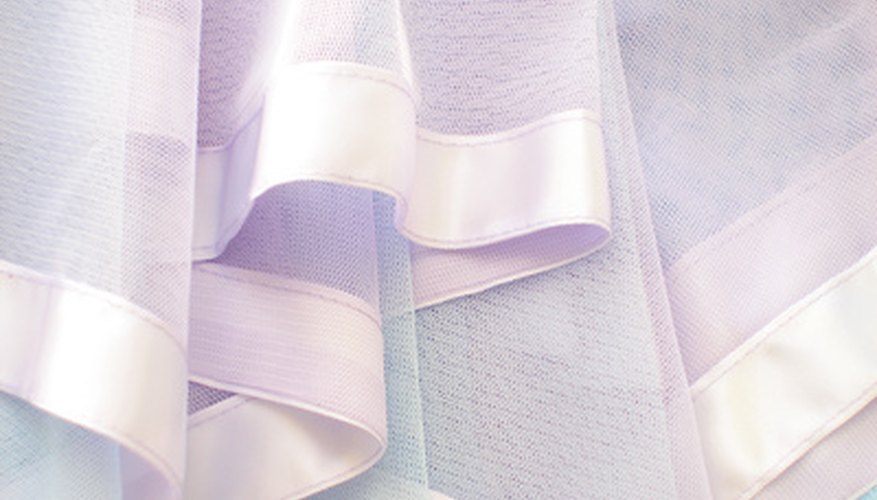Among the oldest fabrics made by man are sheer silk from China and sheer cotton from Egypt. Sheer fabrics are lightweight or flimsy cloth made predominantly of the thinnest knits for a semi-transparent effect. In the 21st century global textile industries keep abreast of the ongoing influence of this material on the fashion and home decor industries, supplying a variety of sheer fabrics. The most popular materials remain cottons and silks, though use of sheer nylon and rayon fabrics continues.
Batiste
Batiste cotton fabric has a delicate plain weave that drapes gracefully. Batiste compares to the thinner cotton "lawn" material, but is often mercerised: the cotton thread is treated with sodium hydroxide, which causes shrinkage and increases the lustre of the cloth while allowing for easier dying. Used to construct baby clothes, blouses, handkerchiefs and lingerie, batiste is easily sewn, making it useful for underlining clothing as well. Care of this popular fabric calls for delicate washing; avoid bleach.
- Batiste cotton fabric has a delicate plain weave that drapes gracefully.
- Batiste compares to the thinner cotton "lawn" material, but is often mercerised: the cotton thread is treated with sodium hydroxide, which causes shrinkage and increases the lustre of the cloth while allowing for easier dying.
Chiffon
Chiffon cloth is among the most popular, elegant and lightweight sheer materials, and is used by professional clothes designers, costumiers and sewing hobbyists for evening wear, dresses, nightgowns and scarves. Treating this flimsy, hard-to-cut-and-sew material with starch makes the cloth more workable, but the starching causes some chiffon material to spot if exposed to water and other liquids. Before washing a chiffon garment, test a small piece of this fabric with water. A professional cleaner can remove unsightly marks on chiffon that has been stained.
- Chiffon cloth is among the most popular, elegant and lightweight sheer materials, and is used by professional clothes designers, costumiers and sewing hobbyists for evening wear, dresses, nightgowns and scarves.
- Treating this flimsy, hard-to-cut-and-sew material with starch makes the cloth more workable, but the starching causes some chiffon material to spot if exposed to water and other liquids.
Tulle
Named after the French town of Tulle (pronounced "tool"), this delicate-looking, lightweight net fabric is manufactured in silk, rayon and nylon; cotton tulle is sometimes starched to add structure. Tulle is machine-made using a bobbinet weaving technique, creating a hexagonal weave that helps this amazingly durable and strong cloth retain its shape. Incorporated into fashion design for its sheer lace look, tulle is a popular material for wedding gowns, formal gowns and ballet tutus. Tulle applied in layers adds volume to garments. The fabric is popular as gift-wrapping and for hobbyists making scrapbooks; it also makes excellent insect netting because of its remarkable strength. Machine-wash or hand-wash in cold water; for best results, dry tulle material and garments flat.
- Named after the French town of Tulle (pronounced "tool"), this delicate-looking, lightweight net fabric is manufactured in silk, rayon and nylon; cotton tulle is sometimes starched to add structure.
Voile
The gauzelike, free-flowing characteristics of voile makes this material perfect for veils ("voile" is French for veil). This plain-woven, lightweight, classy material has a non-scratchy texture that is kind to skin. Cotton voile makes summer attire breathable, and is well-suited to skirts, blouses and sun dresses. Voile makes elegant curtains and drapes as well as adding volume under garments. Wash voile on a delicate setting and hang or lay flat to dry.
- The gauzelike, free-flowing characteristics of voile makes this material perfect for veils ("voile" is French for veil).
- Cotton voile makes summer attire breathable, and is well-suited to skirts, blouses and sun dresses.
